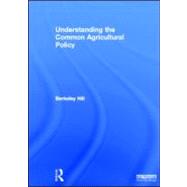- ISBN: 9781844077779 | 1844077772
- Cover: Hardcover
- Copyright: 1/12/2012
Most of the recent written material on the Common Agricultural Policy (CAP) is about the details of the day - for example, the views of interested parties on the way milk quotas should be removed or the consequences for the European Union (EU) of different proposals from opposing camps in the international trade negotiations. Surprisingly little is available which attempts to increase understanding of why the policies are as they are, how they attempt to tackle the underlying problems faced in the EU and the degree of success they achieve, and the prospects for change. Yet knowledge of this process and how it can be applied is precisely the sort of material which students require to gain good understanding of the CAP. The details of agricultural and rural policies have changed and will change many times, and the number of Member States may increase further; yet the principles of policy analysis as applied to the CAP will endure and be of use as details evolve. These principles are the main focus of this book. The authors use economics as the main toolkit, as fairly simple economics holds the key to understanding many of the fundamental pressures to which agriculture, environmental issues and rural areas are subject. However, to explain the CAP they acknowledge the importance of the political and administrative environment in which CAP decisions to allocate public funds are made. Thus political economy, especially theory of public choice and the behaviour of bureaucratic organizations, is also drawn upon.







